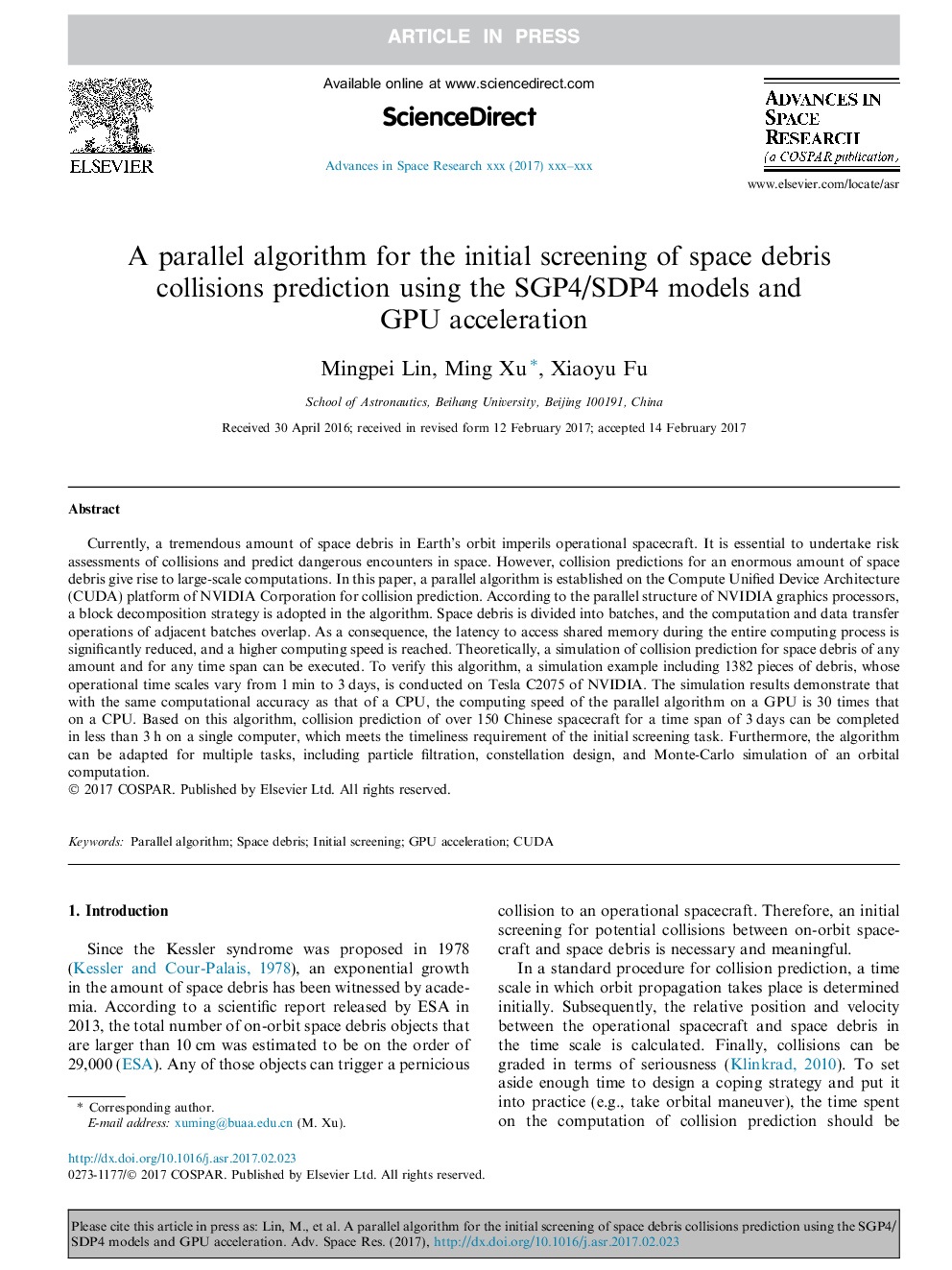| Article ID | Journal | Published Year | Pages | File Type |
|---|---|---|---|---|
| 5486522 | Advances in Space Research | 2017 | 9 Pages |
Abstract
Currently, a tremendous amount of space debris in Earth's orbit imperils operational spacecraft. It is essential to undertake risk assessments of collisions and predict dangerous encounters in space. However, collision predictions for an enormous amount of space debris give rise to large-scale computations. In this paper, a parallel algorithm is established on the Compute Unified Device Architecture (CUDA) platform of NVIDIA Corporation for collision prediction. According to the parallel structure of NVIDIA graphics processors, a block decomposition strategy is adopted in the algorithm. Space debris is divided into batches, and the computation and data transfer operations of adjacent batches overlap. As a consequence, the latency to access shared memory during the entire computing process is significantly reduced, and a higher computing speed is reached. Theoretically, a simulation of collision prediction for space debris of any amount and for any time span can be executed. To verify this algorithm, a simulation example including 1382 pieces of debris, whose operational time scales vary from 1Â min to 3Â days, is conducted on Tesla C2075 of NVIDIA. The simulation results demonstrate that with the same computational accuracy as that of a CPU, the computing speed of the parallel algorithm on a GPU is 30 times that on a CPU. Based on this algorithm, collision prediction of over 150 Chinese spacecraft for a time span of 3Â days can be completed in less than 3Â h on a single computer, which meets the timeliness requirement of the initial screening task. Furthermore, the algorithm can be adapted for multiple tasks, including particle filtration, constellation design, and Monte-Carlo simulation of an orbital computation.
Related Topics
Physical Sciences and Engineering
Earth and Planetary Sciences
Space and Planetary Science
Authors
Mingpei Lin, Ming Xu, Xiaoyu Fu,
